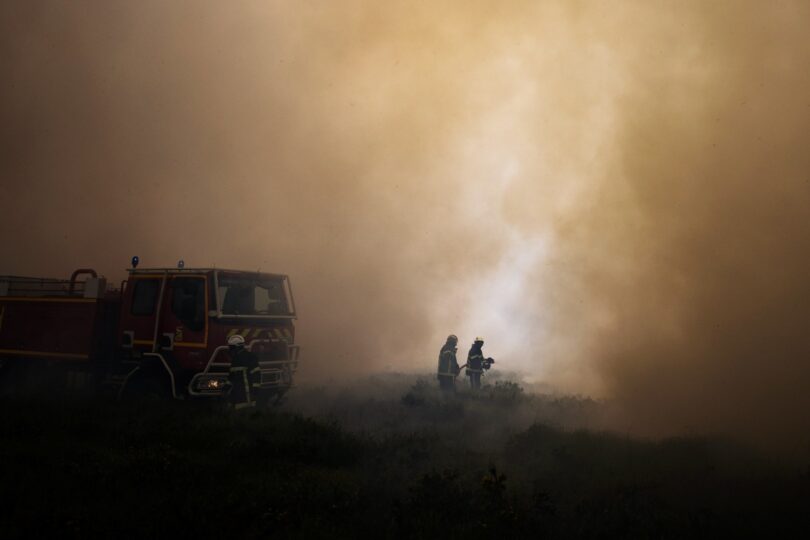Europe is on fire: For days, temperatures have skyrocketed above 100 degrees Fahrenheit (38 Celsius), shattering records and triggering huge wildfires that have forced tens of thousands from their homes. From Portugal to Spain to Greece, the flames have spread like a contagion. In the countryside surrounding Bordeaux, France, 75 square miles have charred in the past week. Blazes are even breaking out across London, a city not exactly known for fire weather.
Wildfires are, of course, a perfectly natural phenomenon and have periodically reset ecosystems for new growth throughout history. But in modern times, thanks to humanity’s meddling with the climate and the landscape, these fires have ballooned into unnatural beasts that instead obliterate ecosystems. Fire historian Stephen Pyne has termed this the Pyrocene, an age of flames.
Over the past several years, many factors have conspired to create the massive wildfires seen in Australia and California. Climate change has created more intense heat waves and longer dry seasons, with more crisp, ready-to-burn vegetation. And human habitation is expanding from city centers into these increasingly dry wild zones. (In California, for example, folks are getting priced out of coastal regions and moving into cheaper areas in the forested eastern parts of the state.) The one constant among wildfires is that humans will find a way to start them, whether it’s a spark from a cigarette, a lawnmower, or a firework. “In the US, we have a wildland-urban fire problem—we define it as people foolishly moving into fire-prone areas,” says Pyne. But in Europe, he says, it’s the reverse: “Europe has an equally large problem, but it’s because people have moved out of areas.”
In countries like Portugal, Spain, and Greece, economic development has triggered migration into cities and away from pastoral industries, like farming and raising animals. “That economic shift meant that there were not enough people on the landscape to maintain traditional burning or to maintain traditional land use,” says Pyne. For thousands of years, farmers regularly burned their lands to clear out dead brush and make way for new growth, and to lower the risk of massive blazes. But as in California, many modern European communities have turned to a strategy called fire suppression—meaning putting out wildfires quickly before they have a chance to spread, destroy property, and kill people. That means fuel is piling up in the countryside, ready to burn.
Because there are now fewer people living in the countryside—and also tougher conservation laws—forests have grown. While that is good for wildlife, it also adds fuel to the landscape. With fewer grazing animals to chew through grasses, that highly flammable fuel builds up even more. “So you start seeing these fires coming out, and it’s just relentless,” Pyne continues.
“In my lifetime as a firefighter, the size of the forests in our country has doubled,” says Marc Castellnou, an incident commander for the Catalan Fire Service and a fire analyst based in Spain. “So there has been a change in our society becoming more urban, and we’re losing the landscape management.”





